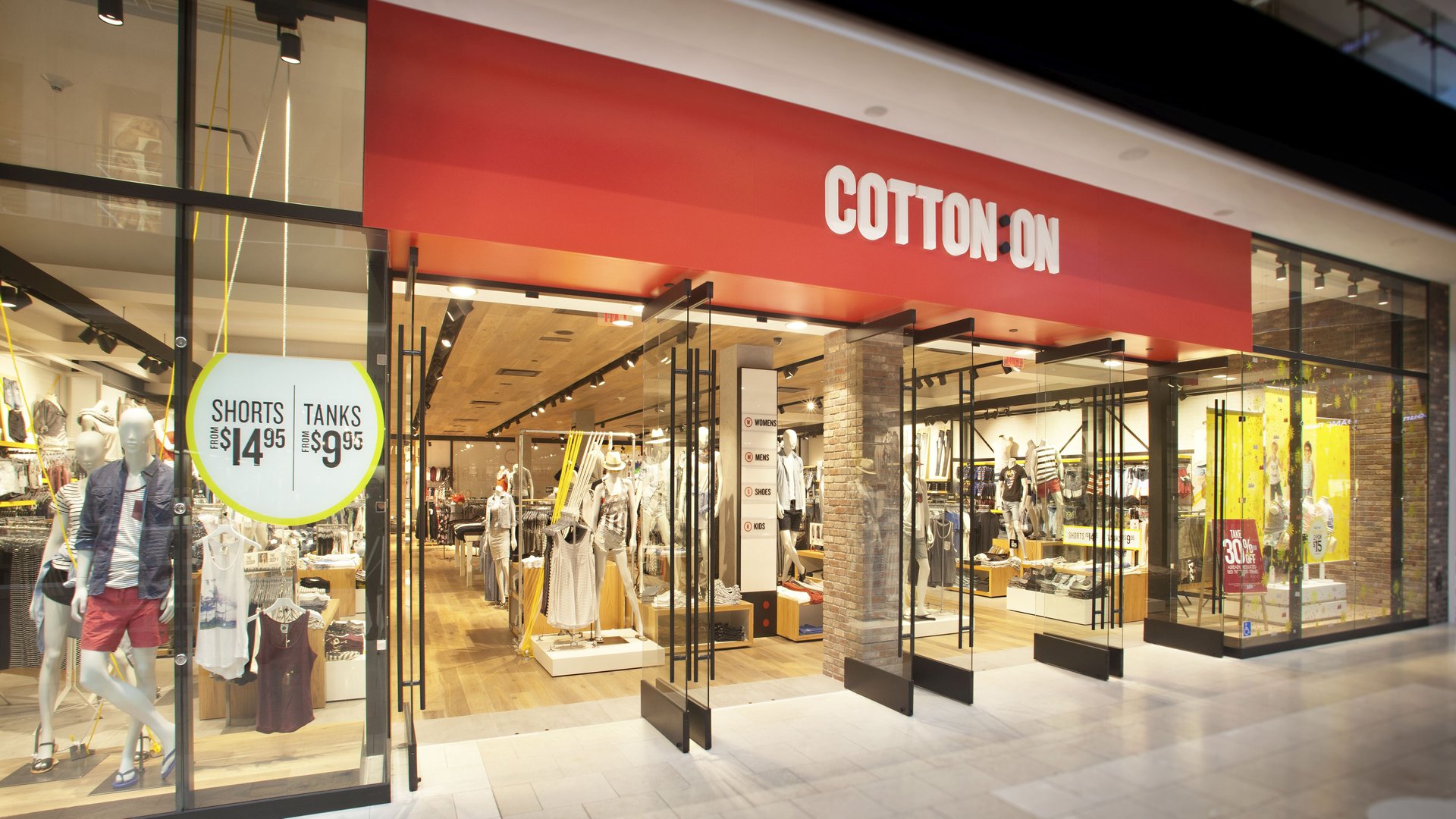A little-known Australian fashion chain is suddenly taking over American malls
Until a few years ago, Cotton On shied away from publicly revealing its size. The Australian fashion chain, which sells low-cost, casual clothes that reflect its Aussie roots—think denim and t-shirt dresses—preferred to grow quietly. It was a “defensive mechanism,” Ashley Hardwick, who co-owns the brand, told the Sydney Morning Herald last year.


Until a few years ago, Cotton On shied away from publicly revealing its size. The Australian fashion chain, which sells low-cost, casual clothes that reflect its Aussie roots—think denim and t-shirt dresses—preferred to grow quietly. It was a “defensive mechanism,” Ashley Hardwick, who co-owns the brand, told the Sydney Morning Herald last year.
But Cotton On doesn’t feel the need to stay under the radar any longer, and neither is it hiding its ambitions: It wants to conquer the US, the world’s largest apparel market.
Since launching with just two stores in Australia in 1991, Cotton On now has more than 1,400 stores in 17 countries around the world. Last year, its global sales hit $1.8 billion AUD (around $1.3 billion USD), and for the past six years, the company says it has averaged 20% sales growth. Its expansion has focused mostly on markets in the southern hemisphere, such as Southeast Asia and South Africa. Now the US, which it sees as key to continuing that growth, has become its new target.
“Over the course of three years, we’ve pretty rapidly opened over 100 stores across 13 states in the country, predominately in the Sun Belt,” says Mark Pan, head of Cotton On’s US operations, referring to the string of states in the southern part of the US. Cotton On opened its first store in California in 2009—a natural fit for the brand’s laid-back Aussie attitude. It’s had positive comparable-store sales growth every year, which makes it clear why it plans to enlarge its footprint.
“Our near-term focus is to double the business over the next three years, with an additional focus on the West Coast,” Pan tells Quartz.
Cotton On may be unfamiliar to many Americans, but its business model isn’t. It operates much like the fast-fashion chains currently killing US retailers. Much like Zara and H&M, it delivers new styles to stores weekly, and can move an item from concept to sales floor in two to eight weeks. (For the US market, it takes a little longer, at six to 12 weeks). That speed, according to Pan, makes it extremely nimble in replenishing items that are selling well, and means it doesn’t have to order huge quantities of styles in advance that could end up sitting on racks if shoppers aren’t buying them.
The clothes are priced to match its competition. A pair of jeans can go for around $40, and all of the women’s items on Cotton On’s US site currently price under $100. The company produces its clothing mostly in China and Bangladesh, the global epicenters of cheap garment production. Combined, these two countries make about 97% of its products.
Like the other low-cost retailers that source from Bangladesh, Cotton On came under criticism after the deadly factory collapse at Rana Plaza that killed 1,134 people. It wasn’t producing clothes there, but it eventually signed on to one of the international treaties to improve Bangladesh’s garment industry. Progress has been slow, however.
Founder Nigel Austin started the company selling acid-wash denim jackets—provided by his father, a clothing wholesaler—out of the trunk of his car in Geelong, Australia, located about an hour south of Melbourne. In 2000, when the company had 60 stores, he did away with wholesale and moved to direct sourcing, and in 2005, implemented Cotton On’s ultra-fast replenishment system.
The company has blown up since, and shows no signs of slowing.